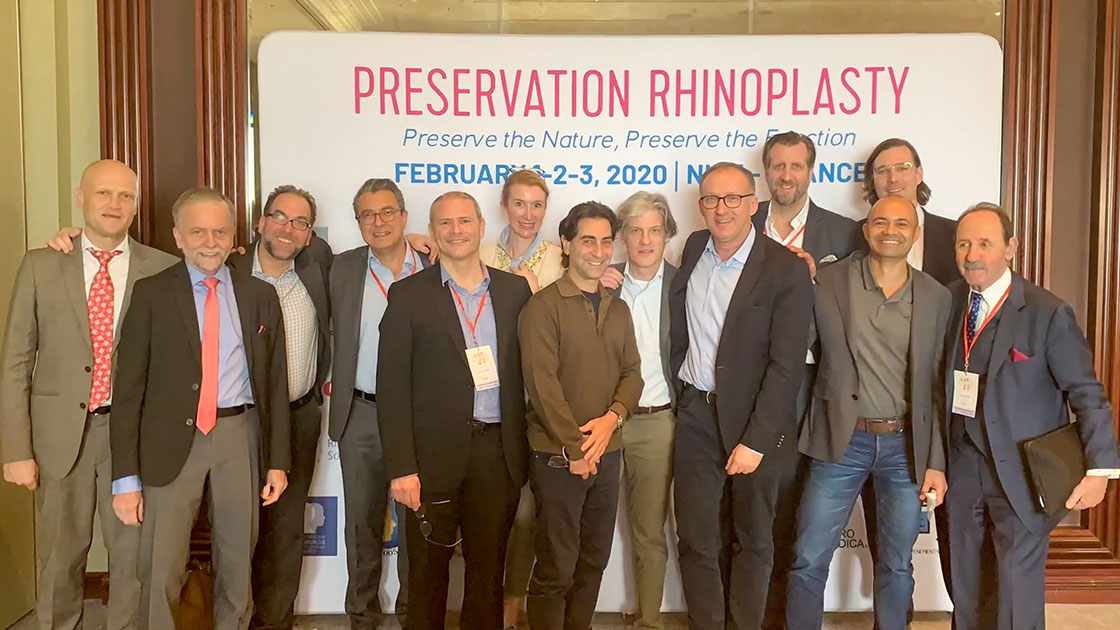Preservation Rhinoplasty
This is a technique which has now found its way into my routine practice.
Preservation Rhinoplasty is not an approach I would give you the choice to have or not. Rather, it is a series of techniques that I would incorporate into your surgery to a greater or lesser degree, depending on the complexity and structural concerns of your case.
I performed my first Preservation Rhinoplasty case in June 2018 and have incorporated its’ principles routinely since September 2019.
Preservation techniques require significantly more study, teaching and practice and even for experienced rhinoplasty surgeons require a concerted effort to master.
To elaborate:
Most rhinoplasties I perform are structural rhinoplasty where the nasal framework is rebuilt and strengthened to achieve cosmetic and functional (breathing) goals. This can be a small adjustment or a total nasal reconstruction- every case is different. Structural rhinoplasty often requires repurposing a patient’s own nasal cartilage or sourcing cartilage from elsewhere in the body (usually rib in my cases). I DO NOT like to use synthetic implants. Results from using these products are generally too unpredictable in the complex patient group I see and risks are higher. Structural rhinoplasty generally requires an “Open Approach” with a small cut across the bridge of skin between the nostrils. It is not quick surgery and requires significant skill and patience but results in very good, predictable results for those surgeons with the experience. Not all rhinoplasty surgeons perform structural rhinoplasty especially those that solely use “Closed” rhinoplasty techniques (no cut between the nostrils). It has been the cornerstone of rhinoplasty surgery for over 25 years with many refinements occurring over that time and research continues. For complex rhinoplasty or revision rhinoplasty, it is still the undeniable gold standard.
PRESERVATION RHINOPLASTY refers to more conservative techniques to primarily achieve a nicer look (aesthetic) to the nose although it can aid the airway too in some cases of septal deviation or nasal valving (sidewall collapse with breathing in through the nose). The principles of Preservation Rhinoplasty centre around maintaining natural structural elements and support with minimal disruption to framework directly under the skin to try to avoid irregularity that can occur and show externally. The area along the bridge of the nose has traditionally been most prone to this after the shaving down of a hump even sometimes occurring some years postoperatively. In this example, Preservation Rhinoplasty would look to weaken and set down the deeper foundations of the nose thus lowering the hump without operating directly on it and avoiding later lumpiness. It’s like lowering the slope of a house roof by adjusting the homes foundations rather than removing the roof. It is not a new technique having been in continuous practice for over 100 years in many pockets of the world but its recognition and application have really only truly blossomed in the past 2-3 years. It is often elegant surgery and healing is usually quicker. It does require an expert, up to date understanding of the many techniques and complex nasal anatomy. Complications can still occur (and are different from structural rhinoplasty) and the way to address these needs to be understood and specifically discussed pre-op. Preservation techniques typically suit a patient with a straight nose, who has not had surgery before, who has a hump on their nose and requires minimal tip work. There are many applications beyond this for some crookedness, septal deviation, some tip shaping and wide noses but they increase the risks and operator skill required.
It is not generally used for complex reconstructions or revision rhinoplasty where structural rhinoplasty would be necessary. It is a tool to use at the right time and we should be mindful of preservation principles in all cases (even if just to reattach skin ligaments, etc).
More detail is outlined below if interested:
Technically, the concept of Preservation Rhinoplasty refers to rhinoplasty approaches that preserve one or more of either:
- DORSAL PRESERVATION: The external framework of the nasal bridge (Cartilage and bone). This is by far the most common part dealt with via preservation rhinoplasty. Where a patient has a hump this can be addressed without just rasping down the bone or, in the case of larger humps, opening the bridge of the nose to reconstruct it (i.e. a structural rhinoplasty).
- SOFT TISSUE PRESERVATION: Nasal soft tissues and ligaments. These support the skin (its contour and draping) as well as the underlying nasal framework especially the sidewalls of the nose (Alar and just above this over the compressible sidewall of the nose) which are critical to achieve and maintain over time a good nasal airway (nasal breathing). If cutting them is required then reattaching is important but previously this was underappreciated by many surgeons.
- TIP PRESERVATION: Nasal tip cartilages are preserved in their entirety but just shaped and sutured to achieve the desired result. This is not possible in many noses because of the amount of reshaping necessary and in reality, is probably not as important as points 1 and 2 above in the principles of minimal disruption to native structure that underpin preservation rhinoplasty.
Feel free to discuss this more with me as you wish.





